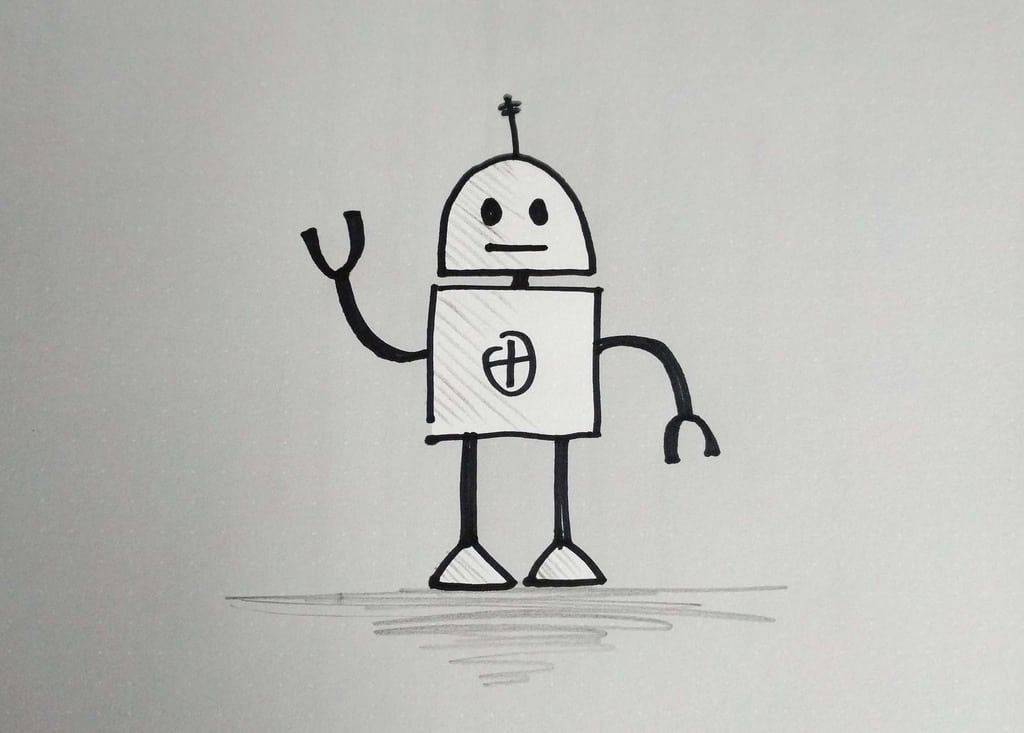One of the front runners in e-learning solutions is the chatbot technology. Chatbots are, increasingly, becoming a part of our daily lives. For example, personal assistant chatbots such as Apple’s Siri on the phone, Microsoft’s Cortana on the computer and Amazon’s Alexa on the Amazon Echo device in a living room. More and more companies are now deploying chatbot to provide technical support. And now they are being used in e-learning as well.
What are Chatbots?
A chatbot is a computer program that is designed to interact with one or more users (human) in an intelligent conversation using audio or text. These intelligent bots are generally deployed as virtual assistants. One of the most common examples can be Google Allo which is an intelligent messaging app provided with Google Assistant. It replies to user’s queries by texting back.
Chatbots are mostly powered using AI. They can be used on any digital platform, from websites to mobile phones. So, how can these chatbots be used in e-learning and education?
In an e-learning environment, learners can access the content anytime. At the click of a button, learners can find lecture videos, course materials and post questions on forums. But the downside is that they have to wait for lengthy periods of time to find the answer of their questions. Chatbots in e-learning provide a perfect solution for an instant and meaningful feedback. They provide more personalised experience and if they are properly used then they can easily replace the functions, traditionally performed by a course tutor in a classroom environment. They can not only replace these functions, but they can do so in a better way. Apart from being accurate, they can have an intelligent conversation with hundreds or thousands of people at the same time. Duolingo’s chatbot is an amazing example of how chatbots can help in creating interactive learning experiences.
Chatbots are the most innovative solution being used to bridge the gap between technology and education. Chatbots provide an interactive learning experience like that of a one-to-one communication with a teacher. Some of the ways through which chatbots can be deployed in e-learning are:
- Personalised Learning Pathway
One of the biggest advantages of e-learning is that you can design the course according to your specific needs and abilities. In simple words, you can follow some modules and not others and/or you can also progress through modules at a preferred speed, thereby pacing your learning in a manner that is comfortable to you.
A chatbot helps in ensuring that a learner is progressing in the right manner by performing the required tasks in the modules and pacing their learning in the desired manner. This usually happens in the form of conversations with the learner, to understand their abilities. Most of the time, the answers that the learner provides decide the questions that a chatbot will ask next, which helps in creating a highly personalised learning pathway.
- As an Assistant for Teacher
Learners often ask questions about the modules in the course. Most of the time, the questions are related to administrative queries, but they can also be content-related. The answers to these questions can be found in the course material but learners still ask them. Chatbots answer these questions and learners feel that they are talking to a person.
An example of this is a chatbot Jill Watson, developed by computer science professor Ashok Goel for his students at Georgia Tech in the US. He designed this chatbot using IBM’s Watson artificial intelligence platform. He did not tell his students that Jill is a chatbot and the students did not find out about it until they finished their exams.
- Better Course Feedback
Chatbots are also used in acquiring more meaningful and actionable feedback from learners who complete the courses. They explore the answers of the learners in depth, to help with future course and learner development.
- Performing Simulations
Chatbots are used to simulate the lesson topics in an interactive way. They help the learner to complete the course step-by-step. They bring e-learning activities into messaging and engage learners in realistic practice conversations.
- Assessing Learners
Suppose a class consists of a large number of students, then it becomes tough for teachers to provide personalised care and attention to each student. Chatbots help teachers by working with multiple students and groups simultaneously.
Assessments are also a part of an e-learning module. The assessments can be integrated with bots to help the learner with hints and tips to complete the assessment properly and within the specified time-frame.
- Enrolling Learners
A chatbot can be programmed to enrol eligible learners in the correct courses by checking the prerequisites and other requirements. It helps in saving a lot of time. Chatbots can also help in suggesting better courses for learners according to the details entered by the learners.
- Saving Teachers’ Time
Chatbots can help teachers by simplifying their daily routine tasks. They may serve as a help by answering the questions raised by students on a daily basis, checking their homework regularly, identifying spelling and grammatical mistakes with precision, assigning projects and keeping track of students’ progress and achievements.
- Perform Onboarding
Chatbots can be used to hire a learner. Whenever a new learner is hired, the chatbot can walk the new learner through required processes. It can provide links to forms and prompt the learner to complete them.
Until now, virtual assistants and bots were viewed more as a novelty than a strategy. This has now started to change. Chatbots now provide a lead platform to guide students in the right, brighter direction with the help of proper use of technology and human mind.





